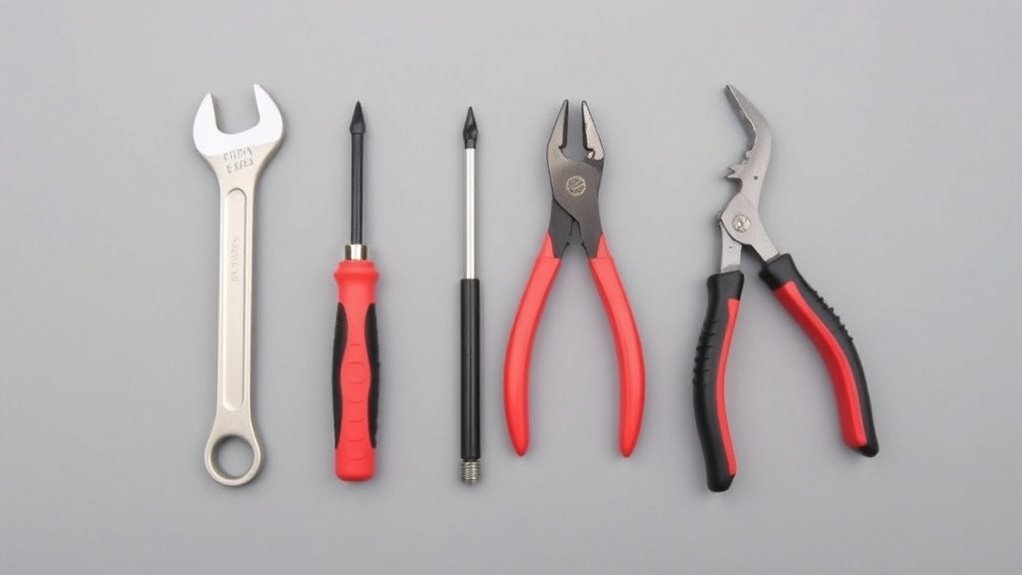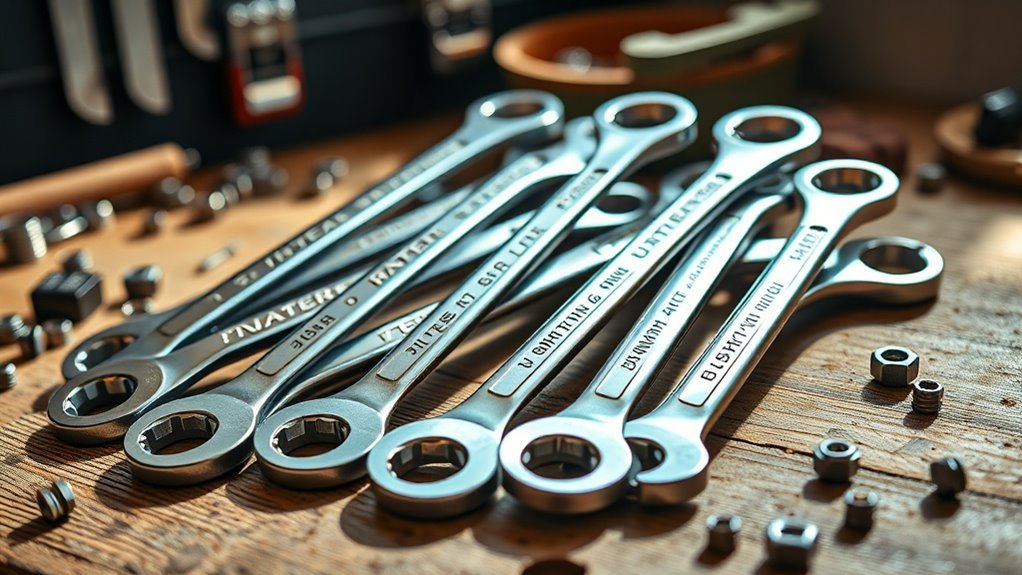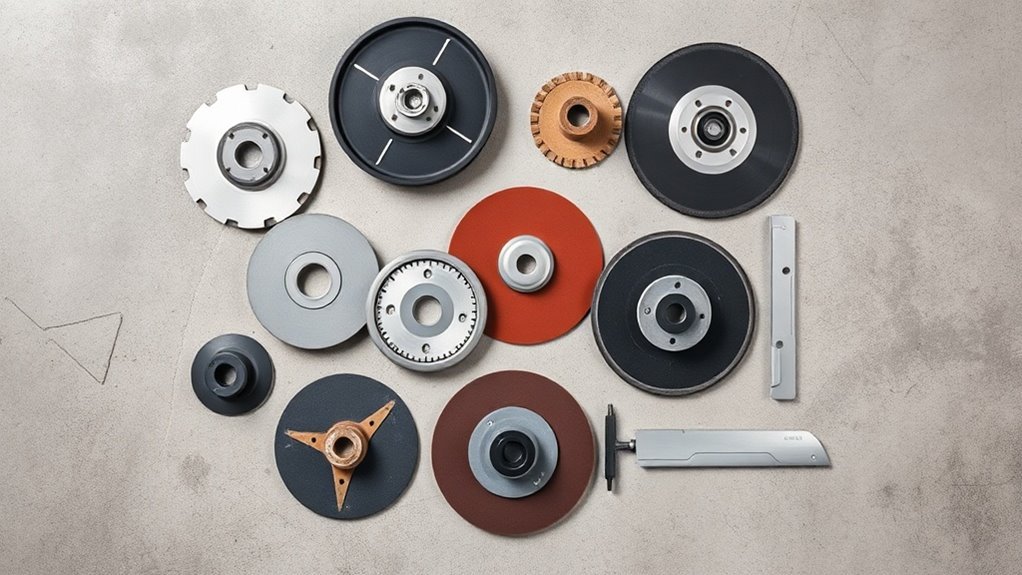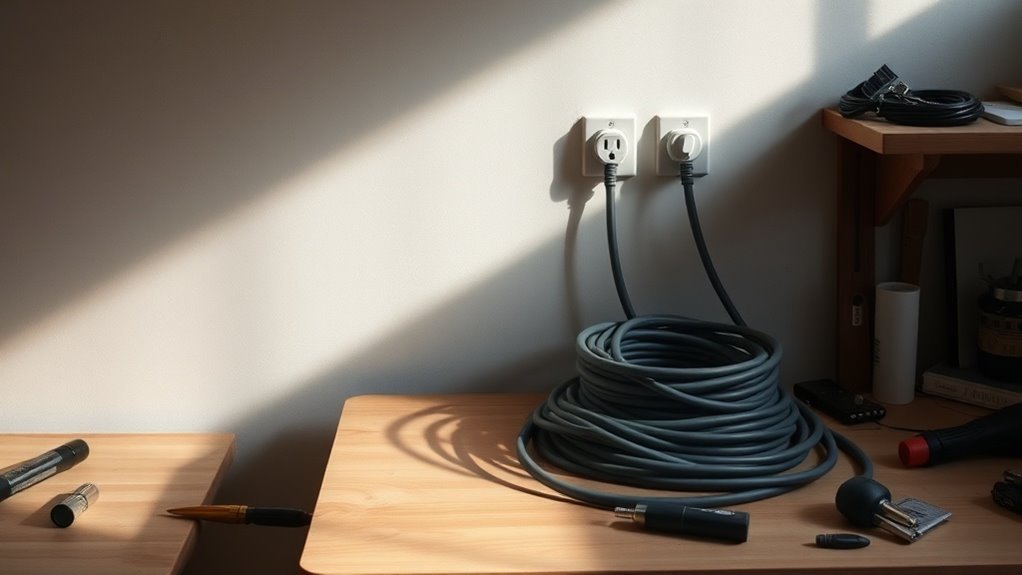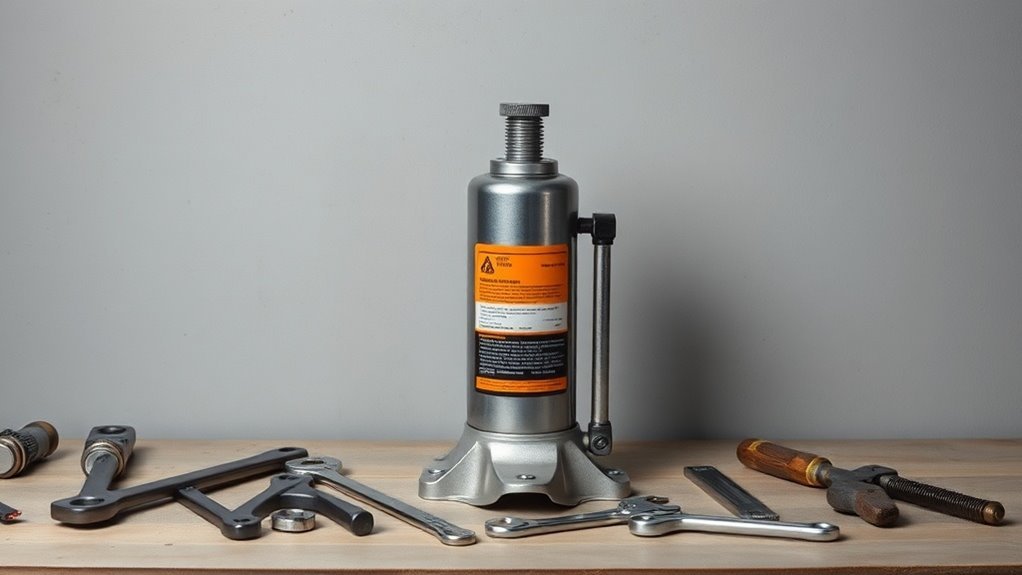The Importance of Precision Measuring in DIY
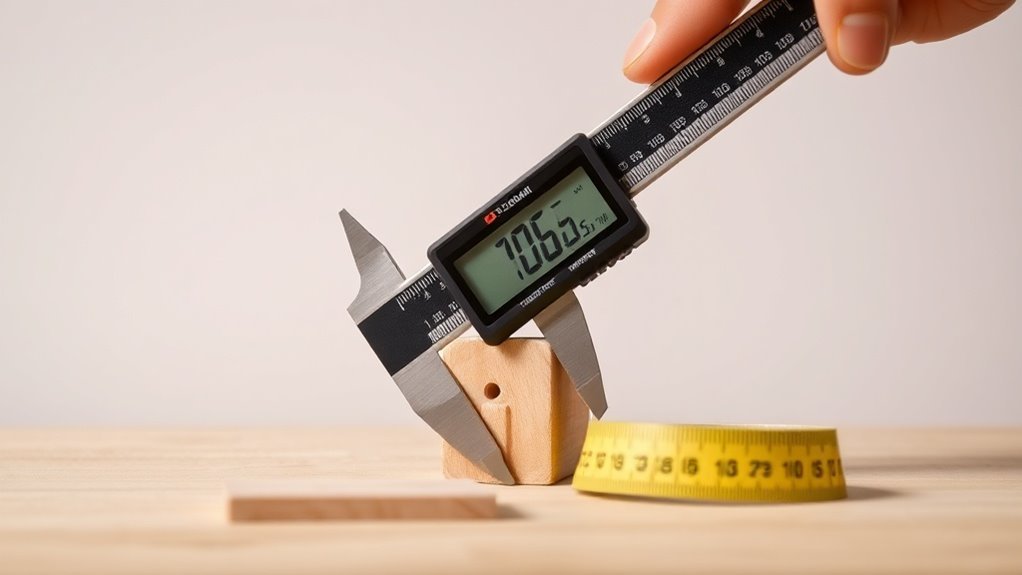
Precision measuring is essential in DIY projects because it guarantees accuracy, reduces waste, and saves you money. Small errors can lead to misalignment or costly reworks, impacting the project’s overall success. Using the right tools like tape measures and squares can boost your confidence and enhance communication when collaborating. By focusing on precise measurements, you can avoid budget overruns and material waste. Want to discover more tips and techniques for getting it right?
Key Takeaways
- Accurate measurements minimize material waste, ensuring only what’s necessary is purchased, which saves costs over time.
- Precision in measuring leads to effective project planning, reducing the likelihood of budget overruns and rework expenses.
- Utilizing proper measuring tools, like tape measures and squares, enhances accuracy and consistency throughout the project.
- Small errors in measurements can result in costly mistakes, affecting the overall quality and functionality of DIY projects.
- Successful DIY outcomes, such as fitting custom cabinets, demonstrate the long-term benefits of accuracy in measurements.
Understanding the Impact of Measurement Errors
While you might think that small measurement errors won’t have much impact on your DIY projects, they can lead to significant problems down the line.
Even a slight miscalculation can throw off alignment or sizing, causing materials to not fit as intended. Imagine starting to build a shelf, only to find it’s too short or too long—frustrating, right?
These errors can waste time and materials, leading to additional costs you didn’t plan for. Additionally, they can result in structural weakness, making your project less durable. Moreover, using the right measuring tools can help minimize these errors and ensure precision in your renovations.
The Role of Precision in Planning and Design

When it comes to planning and design, precision acts as the foundation for any successful DIY project.
Accurate measurements guarantee that everything fits perfectly, looks great, and lasts over time.
Here are some key aspects of precision in this phase:
- It helps you create detailed blueprints.
- You’ll better allocate your budget by avoiding costly mistakes.
- Accurate measurements reduce material waste, saving you money.
- Precision fosters effective communication if you’re collaborating with others.
- It boosts your confidence in tackling more complex projects.
- Additionally, using the right measuring tools can further enhance the accuracy of your measurements, ultimately leading to superior craftsmanship.
Common Tools for Accurate Measuring
When you tackle a DIY project, having the right measuring tools can make all the difference.
You’ll find various devices designed for specific tasks, each offering unique benefits.
Let’s explore the essential tools and tips you need for accurate measurements. Additionally, incorporating spirit levels into your toolkit can significantly enhance the accuracy of your leveling tasks.
Essential Measuring Tools
In any DIY project, having the right measuring tools can make all the difference between success and frustration. You want to guarantee accuracy in your measurements, so investing in essential tools is vital.
Here’s a quick list of must-have measuring tools:
- Tape Measure: Flexible, portable, and perfect for measuring longer distances.
- Ruler or Straightedge: Great for straight lines and precise short measurements.
- Square: Guarantees right angles when framing or aligning materials.
- Caliper: Ideal for more detailed, precise measurements, especially in smaller spaces.
- Level: Guarantees that your surfaces or projects are perfectly horizontal or vertical.
With these tools in hand, you’ll feel more confident tackling any DIY project with precision and ease.
Types of Measuring Devices
Accurate measuring is essential for any DIY project, and there are several types of measuring devices that can help you achieve that precision. Here’s a quick overview of some common tools you might find useful:
| Measuring Device | Description | Best Use |
|---|---|---|
| Tape Measure | Flexible ruler for length | Measuring long distances |
| Ruler | Straight measuring tool | Measuring short distances |
| Calipers | Tool for internal/external diam. | Precision of small objects |
| Level | Tool guaranteeing a flat surface | Aligning pictures or shelves |
Having the right measuring devices at hand makes all the difference in your projects. With these tools, you can guarantee that every cut and placement is spot on, leading to impressive results.
Tips for Accurate Measurement
Getting precise measurements is essential for the success of any DIY project, and a few straightforward tips can make all the difference. Here’s how you can guarantee accuracy:
- Use a reliable measuring tape: Guarantee it has clear markings and a sturdy case.
- Double-check your measurements: Measure twice to avoid costly mistakes.
- Keep the measuring tape straight: Avoid sagging to get correct readings.
- Mark with a pencil: Use a fine-tip pencil for clear, precise marks that can be easily erased.
- Practice patience: Rushing leads to errors, so take your time for each measurement.
Techniques for Ensuring Consistency in Measurements
To achieve consistent measurements in your DIY projects, you need to use your tools correctly. It’s also essential to double-check your numbers to avoid mistakes. Sticking to consistent techniques will help you maintain accuracy throughout your work. Regular tool maintenance is crucial for ensuring that your measuring instruments are functioning correctly and delivering precise results.
Use Measuring Tools Properly
When it comes to precision measuring, knowing how to use your tools properly is key for achieving consistent results. Familiarizing yourself with each tool’s features and limitations will enhance your accuracy.
Here are some techniques to keep in mind:
- Calibrate Your Tools: Confirm they’re set correctly for the task.
- Hold Steady: Keep your measuring tool steady during measurement; any movement can lead to errors.
- Check Alignment: Make sure to align measurement markings with your intended measure point.
- Use the Right Tool: Select a measuring tool suited for the material you’re working with.
- Maintain Cleanliness: Keep your tools clean for accurate readings; dirt can skew measurements.
Double-Check Your Numbers
Even the most skilled DIYers can make mistakes, so double-checking your numbers is crucial to guarantee accuracy in your measurements. Start by measuring your length or width, then write it down before moving on. If you take a second measurement, compare it with your first. A small discrepancy can lead to big problems later.
Use a tape measure and a square tool for right angles, and always check that the measuring tape is straight. Additionally, try to have someone else confirm your measurements. Fresh eyes can catch errors you might miss.
Finally, don’t rush—take your time, as precision is key in DIY projects. Remember, it’s better to measure twice and cut once!
Maintain Consistent Techniques
As you immerse yourself in your DIY projects, maintaining consistent techniques is essential for achieving accurate measurements.
Whether you’re building furniture or making repairs, following a set of reliable practices helps avoid mistakes. Here are some tips to guarantee consistency:
- Use the same measuring tools throughout your project.
- Always measure from the same starting point to avoid discrepancies.
- Mark measurements precisely on your materials to reduce errors.
- Keep your measuring tools calibrated and in good condition.
- Take your time when measuring; haste can lead to inaccuracies.
How to Avoid Common Measuring Mistakes
How can you guarantee your measurements are spot on? First, always use the right tools—don’t rely on just your eyes. A good tape measure, square, and level can make a world of difference.
Second, make sure you’re measuring from the same point consistently. Starting from different points can lead to errors.
Third, double-check your measurements before cutting; it’s easier to prevent mistakes than to fix them later. Also, be mindful of how you read your measurements—don’t misinterpret where the measuring line falls.
Finally, ask someone else to verify your measurements if possible; a fresh set of eyes can catch mistakes you might overlook. Additionally, consider using advanced technology like laser measuring tools, which can significantly enhance accuracy and speed in your measuring tasks.
The Relationship Between Measurements and Material Costs
Here’s the revised content with the new sentence added:
—
Why is accurate measurement so essential when it comes to controlling material costs? When you measure precisely, you minimize waste, ensuring you only buy what you really need. This can lead to significant savings.
Accurate measurement is crucial for minimizing waste and maximizing savings in material costs.
Here are some key factors to evaluate:
- Material Waste: Incorrect measurements often lead to excess material, which you’ll have to pay for but may not use.
- Rework: If your initial measurements are off, you might end up redo parts, increasing both labor and material costs.
- Budget Overruns: Inaccurate measurements can cause unexpected expenses, making it tough to stick to your budget.
- Time Loss: Repeated measuring and cutting wastes time, translating into added costs.
- Project Delays: Mistakes in measurement can lead to delays, which might further increase costs due to extended labor or additional material needs.
Furthermore, mastering accuracy in measurements can greatly enhance your reliability in project execution.
—
This addition emphasizes the importance of accuracy and links to a relevant concept discussed in the provided knowledge.
Case Studies: Success Stories From Accurate Measuring
Accurate measuring not only helps control material costs but also leads to successful project outcomes, proving its value in real-world applications.
For instance, a homeowner used precise measurements to build custom kitchen cabinets, ensuring each piece fit perfectly. This attention to detail minimized wasted materials and resulted in a professional finish, saving both time and money.
Another case involved a couple who accurately measured their living room for new furniture; their careful planning enabled them to select pieces that complemented the space without overcrowding it.
These success stories highlight how taking the time to measure correctly boosts creativity and efficiency in DIY projects.
You can see that precision measuring is essential for achieving the best results in any endeavor you take on.
Tips for Measuring in Different Environments
When you’re measuring in different environments, it’s crucial to adapt your techniques to ascertain precision. Each setting can present unique challenges that affect how you measure. Here are some tips to keep in mind:
- Temperature Considerations: Temperature fluctuations can cause materials to expand or contract, affecting measurements.
- Lighting Conditions: Cultivate adequate lighting to read measuring tools accurately, especially in dim areas.
- Surface Stability: Always measure on a stable surface; uneven ground can lead to errors.
- Humidity Levels: High humidity might warp wood and other materials, so recalibrate your approach.
- Noise Factors: In noisy environments, distractions can lead to inaccuracies; focus on your task to maintain attention.
Adapting these techniques helps maintain precision wherever you are.
The Long-term Benefits of Precision in DIY Projects
Although you might be tempted to rush through your DIY projects, taking the time to measure accurately can yield significant long-term benefits. When you measure precisely, your projects not only look better but also stand the test of time. You’ll avoid costly mistakes, reducing waste and saving money in the long run. Accurate measurements help guarantee parts fit together seamlessly, enhancing functionality. Plus, it can boost your confidence for future projects.
| Benefit | Description |
|---|---|
| Cost Savings | Reduces material waste and expenses |
| Enhanced Aesthetics | Creates a polished, professional look |
| Increased Durability | Guarantees parts fit and last longer |
| Boosted Confidence | Encourages tackling bigger projects |
| Better Functionality | Improves overall project effectiveness |
Questions
What Types of Measuring Tools Are Best for Beginners?
For beginners, a tape measure, a square, and a level are essential. These tools are user-friendly and help you guarantee accuracy in your projects. You’ll feel more confident working on your DIY tasks with them.
How Do I Calibrate My Measuring Tools Effectively?
To calibrate your measuring tools effectively, start by checking them against a known standard. Adjust any inaccuracies, guarantee proper storage, and routinely verify alignment to maintain accuracy over time. Regular checks keep your measurements reliable.
Can I Use My Smartphone as a Measuring Tool?
Yes, you can use your smartphone as a measuring tool! Many apps utilize your phone’s camera and sensors to estimate distances. Just make sure to calibrate it properly for more accurate results.
What Are the Best Practices for Measuring Curves and Angles?
To measure curves and angles effectively, you’ve gotta use flexible measuring tapes for curves while protractors aid in angles. Both techniques might seem simple, yet they’re essential for ensuring accuracy in your projects.
How Can Environmental Factors Affect Measurement Accuracy?
Environmental factors like temperature, humidity, and even lighting can affect measurement accuracy. You might find materials expand or contract, leading to discrepancies. Always consider your surroundings to guarantee your measurements remain precise and trustworthy.
Conclusion
In the grand scheme of DIY, who needs precision anyway? After all, a few centimeters off here and there can only lead to a charming “unique” design, right? But as you engage in your next project, remember that those small errors can snowball into major headaches—and expenses. So, while you might think that measuring accurately is overrated, the truth is that your future self will thank you for avoiding unnecessary chaos and costs. Aim for precision; it pays off.

